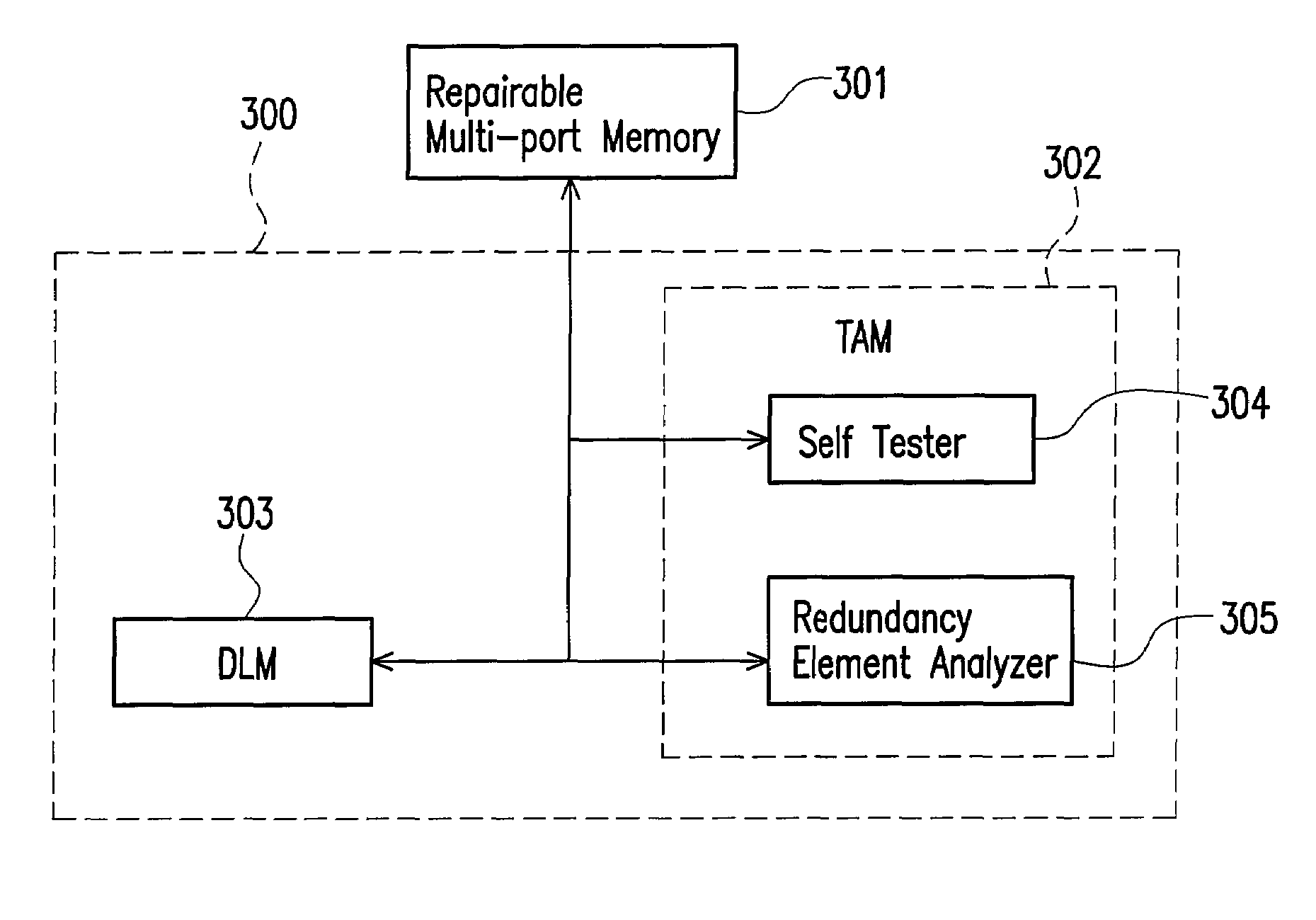Built-in self repair circuit for a multi-port memory and method thereof
a multi-port memory and self-repair technology, applied in the field of built-in self-repair circuits for multi-port memory, can solve the problems of increasing the complexity of circuit layout, affecting the accuracy of multi-port memory repair, and occupying a lot of chips, so as to avoid inaccurate or incomplete repairs to multi-port memory.
- Summary
- Abstract
- Description
- Claims
- Application Information
AI Technical Summary
Benefits of technology
Problems solved by technology
Method used
Image
Examples
Embodiment Construction
[0031]Reference will now be made in detail to the present preferred embodiments of the invention, examples of which are illustrated in the accompanying drawings. Wherever possible, the same reference numbers are used in the drawings and the description to refer to the same or like parts.
[0032]Please refer to FIG. 3 and FIG. 4 for following description. FIG. 3 is a diagram of a BISR circuit 300 for a multi-port memory according to an embodiment of the present invention, and FIG. 4 is a flowchart illustrating a BISR method for a multi-port memory executed by the BISR circuit 300. The BISR circuit 300 includes a test-and-analysis module (TAM) 302 and a defect locating module (DLM) 303, and the TAM 302 further includes a self tester 304 and a redundancy element analyzer 305. The repairable multi-port memory 301, the self tester 304, the redundancy element analyzer 305, and the DLM 303 are coupled to each other.
[0033]The procedure of FIG. 4 starts from step 405. In step 405, the self tes...
PUM
 Login to View More
Login to View More Abstract
Description
Claims
Application Information
 Login to View More
Login to View More - R&D
- Intellectual Property
- Life Sciences
- Materials
- Tech Scout
- Unparalleled Data Quality
- Higher Quality Content
- 60% Fewer Hallucinations
Browse by: Latest US Patents, China's latest patents, Technical Efficacy Thesaurus, Application Domain, Technology Topic, Popular Technical Reports.
© 2025 PatSnap. All rights reserved.Legal|Privacy policy|Modern Slavery Act Transparency Statement|Sitemap|About US| Contact US: help@patsnap.com



